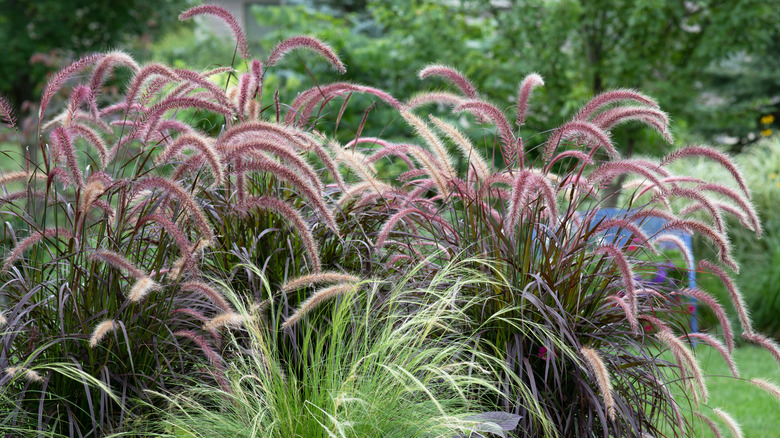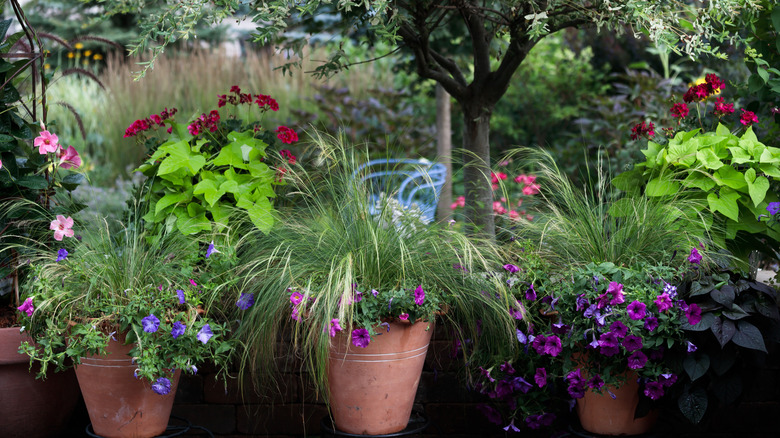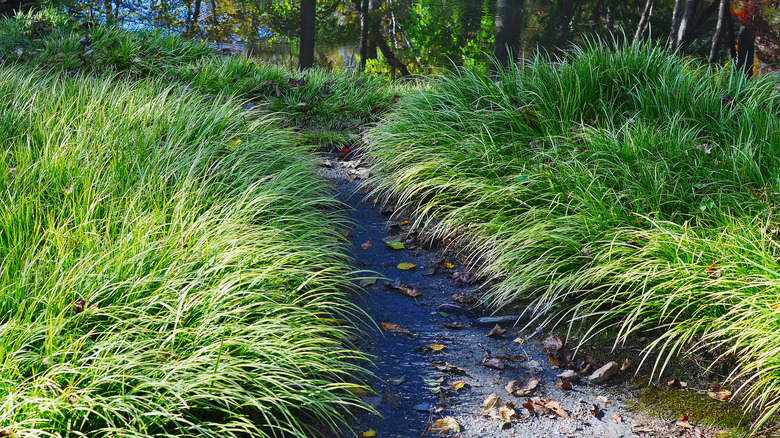Mexican Feather Grass Is Beautiful, But You May Want To Avoid Growing It
When you're mulling over the idea of introducing Mexican feather grass (Nassella tenuissima) to your garden, it's essential to gather all the facts first. This grass, with its delicate blades that sway softly in the breeze, can indeed add a touch of elegance to any garden setting. However, there's a significant caveat to keep in mind, especially in certain areas like California. Here, Mexican feather grass has been labeled a common weed with invasive tendencies.
The "invasive" label is slapped on non-native plants that aggressively spread, often at the expense of local plant communities, throwing ecosystems off balance. Mexican feather grass is a textbook example, thanks to its prolific seed production. These seeds can travel across vast distances, hitching rides on the wind, water, vehicles, and even animal fur, finding new homes in even the most inhospitable places, like cracks in concrete.
What's truly remarkable is this grass' ability to thrive almost anywhere, which, while impressive, spells trouble for gardeners. This adaptability turns the joy of gardening into a relentless chore as you find yourself constantly battling to keep these invasive seedlings at bay. So, if the thought of spending your weekends engaged in an endless cycle of weeding doesn't appeal to you, it might be time to first understand what you're dealing with. You might want to reconsider your choice since there are various more suitable and less demanding choices available that can offer the aesthetic appeal and texture you're seeking without the maintenance challenges of Mexican feather grass.
Identifying and understanding Mexican feather grass
Spotting Mexican feather grass in your garden isn't too tricky once you know what to look for. This plant stands out with its slender, delicate leaves that gracefully arch and sway in the wind, creating a visual dance that's both soothing and eye-catching. As the seasons shift from summer to autumn, you'll notice the green blades of this grass transition to a beautiful golden hue, adding a splash of color to your garden's palette.
Now, if Mexican feather grass is part of your garden, or if you're thinking about introducing it, managing its spread should be your number one priority. Given its tendency to seed prolifically, you have to be vigilant about spotting and promptly removing any unwanted seedlings from areas of your garden where they're not welcome. Getting rid of this weed while it's young makes the task much easier, as it hasn't yet established a strong root system. However, this could become a demanding task that requires regular attention.
If the thought of the work involved in controlling its invasive nature feels overwhelming, opting for container planting could be an effective workaround. Growing it in containers allows you to enjoy the plant's stand-out features. Strategically placing a few potted Mexican feather grasses around your outdoor seating area could beautifully frame your space, offering a sense of enclosure without making it feel closed off. This approach lets you harness the plant's aesthetic benefits while keeping its ambitious growth tendencies firmly in check.
Alternative plants to consider
If you're looking for alternatives to Mexican feather grass that are less aggressive and more garden-friendly, there are several options worth exploring. Firstly, Mexican deer grass (Muhlenbergia dubia) serves as an ideal substitute for those drawn to the look of Mexican feather grass but seeking a less invasive option. Similar in appearance but more contained in its growth habits, Mexican deer grass provides the same visual softness and movement without the risk of it spreading uncontrollably.
Blue grama grass (Bouteloua gracilis, or "blonde ambition") is another North American native plant that offers a unique, eye-catching appearance with its horizontal eyelash-like seed heads. It's well-suited to a variety of garden settings, requiring minimal maintenance once established and providing year-round interest with its striking seed heads and winter foliage. Lastly, prairie dropseed (Sporobolus heterolepis) is another native grass normally found in USDA zones 3 to 9. This plant can grow 2 to 3 feet tall and is renowned for its drought tolerance and ability to thrive in a range of soil types, making it an excellent choice for sustainable gardening practices.
These alternatives to Mexican feather grass can enrich your garden with beautiful, native grasses that contribute positively to the local ecosystem, don't pose a threat to native plant communities, and require far less maintenance to keep in check.


